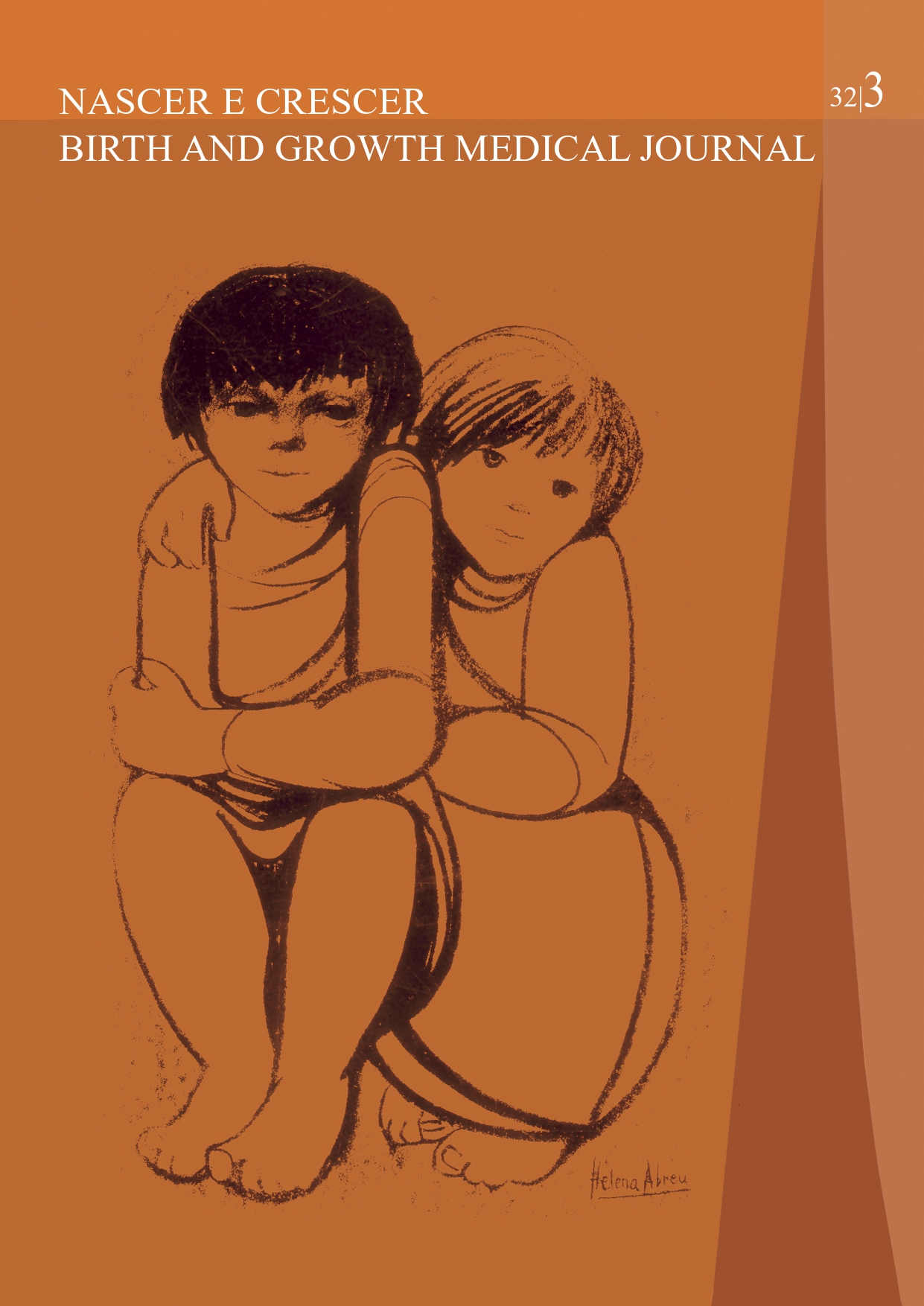Small deletion in the critical region of Cri-du-chat syndrome associated with cat-like cry
DOI:
https://doi.org/10.25753/BirthGrowthMJ.v32.i3.25666Keywords:
cat-like cry, chromosome 5, Cri-du-chat, facial dysmorphism, microcephalyAbstract
Cri-du-chat syndrome is a rare disorder caused by a deletion of part of the short arm of chromosome 5. It is characterized by the presence of clinical features at birth, namely cat-like cry, low weight, microcephaly, and facial dysmorphism. The corresponding phenotypes vary from minimal features to a complete phenotype.
Herein is described the case of an infant who presented from birth with cat-like cry and a peculiar face with a wide nasal bridge and thin upper lip. The genetic study revealed a very small deletion on the short arm of chromosome 5, which has not been described in the literature and may represent a novel variant of this recurrent deletion. Furthermore, since the main feature of this case is the cat-like cry, the considered deletion (detected only by microarray analysis) could be associated with this specific feature.
Downloads
References
Santo LDE, Moreira LMA, Riegel M. Cri-Du-Chat Syndrome: Clinical Profile and Chromossomal Microarray Analysis in Six Patients. Biomed Res Int. 2016; 2016:5467083.
Mainardi PC. Cri du Chat syndrome. Orphanet J Rare Dis. 2006; 1:33.
Liverani ME, Spano A, Danesino C, Malacarne M, Cavani S, Spunton M, et al. Children and adults affected by Cri du Chat syndrome: Care’s recommendations. Pediatr Rep. 2019; 11(1):7839.
Mainardi P, Perfumo C, Cali A, Coucourde G, Pastore G, Cavani S, et al. Clinical and molecular characterisation of 80 patients with 5p deletion: genotype-phenotype correlation. J Med Genet. 2001; 38(3):151-8.
Corrêa T, Feltes BC, Riegel M. Integrated analysis of the critical region 5p15.3-p15.2 associated with cri-du-chat syndrome. Genet Mol Biol. 2019; 42(1 suppl 1):186-96.
Wu Q, Niebuhr E, Yang H, Hansen L. Determination of the ‘critical region’ for cat-like cry of Cri-du-chat syndrome and analysis of candidate genes by quantitative PCR. Eur J Hum Genet. 2005; 13(4):475-85.
JM Nguyen, Qualmann KJ, Okashah R, Reilly AS, Alexeyev MF, Campbell DJ. 5p Deletions: Current knowledge and future directions. Am J Med Genet C Semin Med Genet. 2015; 169(3):224-38.
Zhang B, Willing M, Grange DK, Shinawi M, Manwaring L, Vineyard M, et al. Multigenerational autosomal dominant inheritance of 5p chromosomal deletions. Am J Med Genet A. 2016; 170(3):583-93.
Elmakky A, Carli D, Lugli L, Torelli P, Guidi B, Falcinelli C, et al. A three-generation family with terminal microdeletion involving 5p15.33-32 due to a whole-arm 5;15 chromosomal translocation with a steady phenotype of atypical cri du chat syndrome. Eur J Med Genet. 2014; 57(4):145-50.
Chehimi SN, Zanardo ÉA, Ceroni JRM, Nascimento AM, Madia FAR, Dias AT, et al. Breakpoint delineation in 5p- patients leads to new insights about microcephaly and the typical high-pitched cry. Mol Genet Genomic Med. 2020; 8(2):957.
Downloads
Published
How to Cite
Issue
Section
License
Copyright (c) 2023 Catarina Freitas, Paula Rendeiro, Maria José Costa

This work is licensed under a Creative Commons Attribution-NonCommercial 4.0 International License.
Copyright and Authors' Rights
All articles published in Nascer e Crescer - Birth and Growth Medical Journal are Open Access and comply with the requirements of funding agencies or academic institutions. For use by third parties, Nascer e Crescer - Birth and Growth Medical Journal adheres to the terms of the Creative Commons License "Attribution - Non-Commercial Use (CC-BY-NC)".
It is the author's responsibility to obtain permission to reproduce figures, tables, etc. from other publications.
Authors must submit a Conflict of Interest statement and an Authorship Form with the submission of the article. An e-mail will be sent to the corresponding author confirming receipt of the manuscript.
Authors are permitted to make their articles available in repositories at their home institutions, provided that they always indicate where the articles were published and adhere to the terms of the Creative Commons license.


